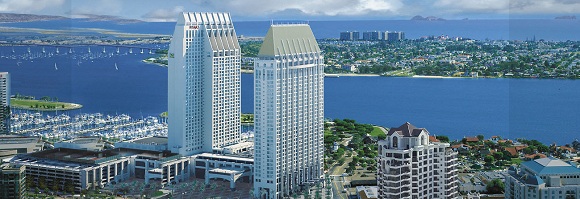By Alan Nevin
As published in the San Diego Daily Transcript March 20, 2012
Tourism has always ranked as one of San Diego County’s economic mainstays. Some studies have shown that it is actually the largest job producer in the United States. I can’t verify that, but the reality is that tourism continues to be a major driver in our economy and is one of the keys to the nation’s economic recovery. When consumer confidence returns, discretionary spending follows — hence the rising trends in auto and retail store sales, service employment, and tourism.
The key man-made drivers to tourism in this county are the San Diego Zoo and botanical gardens, Legoland, SeaWorld, innumerable world-class golf courses, and the Convention Center. The obvious non-man-made drivers are the unbeatable climate and the ocean, neither of which cost a tourist a farthing.
There are many measurements to determine tourism trends, among them, hotel room nights sold and revenue per available room, number of conventioneers, attendance at major attractions, airport traffic, and cruise ship passengers. Of these, only the cruise ship industry is down — more on that later. The one indicator that is exceptionally difficult to track is spending on food and beverage in the downtown area, as the customer base is a broad mix of local residents, business people and tourists.
In terms of hotel success, San Diego County hotel room nights sold were up 600,000, or 4.2 percent, rising to a total of almost 15 million. The more than 50,000 hotel rooms in the county had an 8.4 percent increase in RevPAR, or revenue per available room, and that is the number that hoteliers relate to bottom line profit.
The 2011 year-end numbers are almost the same as in 2008 when we went into the recessionary decline, so the industry is definitely in a positive mode. It is notable that the West Coast had the highest increases in RevPAR in the United States in 2011. A major increase in foreign visitors accounts for much of the gain. As might be expected, Canada and Mexico are by far the largest source of out-of-country visitors to San Diego.
In total, an estimated 31 million visitors came to San Diego County in 2011, up 4.3 percent, with spending up 5.7 percent. San Diego has continually maintained its position as one of the highest occupancy hotel markets in the nation, typically averaging 70 percent year-round. We are in the top five in the nation in year-round hotel occupancy.
The Convention Center is a true magnet for the county’s tourism. Its 60 percent occupancy rate is among the highest in the nation; the national average is 44 percent. Last year, the center hosted 221 events, and more than 800,000 people passed through its doors.
Currently, the center is the ninth largest in the nation, with 615,000 square feet of exhibit space. The delightful problem is that it doesn’t have enough space — hence, the plans for a 207,000 square foot third phase of the Convention Center. With that new phase in operation (in 2015, maybe), we will jump to the top five in the nation and will be able to attract the major conventions that need more space than we can now accommodate.
And the airport. It only has one runway, but it’s doing its very best to act like a major league airport. Now that there is non-stop service to London (I’ve taken that flight, and it’s wonderful) and soon non-stop to Tokyo, we can really say that we’re an international airport. The $1 billion expansion of the west terminal will be complete next summer, with dozens of restaurants, including Stone Brewery and Phil’s BBQ. No doubt the 10,000 employees at the airport will enjoy that enhancement, as well as the 17 million passengers who pass through the security gates. A number of the restaurants will be behind the security gates so you can dine in style without having to go back through security.
The cruise ship industry is our sore spot. Thanks to a massive pullout of cruise ships because of crime problems in Mexico (most of our cruise business was round trips to Mexican ports), our 800,000 cruise passenger count has shrunk to 300,000. And there is not much we can do about it.
And finally, I want to talk about downtown and its hotels. There are 14,000 hotel rooms between downtown and Harbor Island and 6,000 more in planning. San Diego has the largest number of waterfront rooms (6,000) of any city on the West Coast.
“Arguably, San Diego is the most desirable tourism destination in the U.S. and is constantly ranked in the top five in annual surveys of leisure travelers and meeting planners,” according to hotel guru and London Group principal Robert Rauch.
No wonder tourism is a mainstay of the economy — we’ve got it all.
